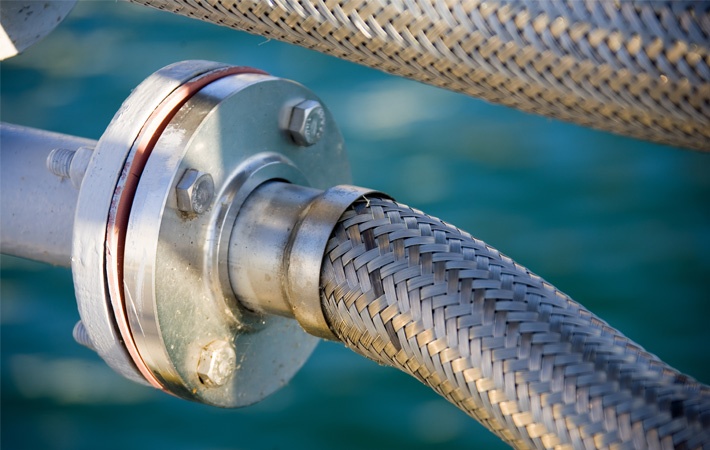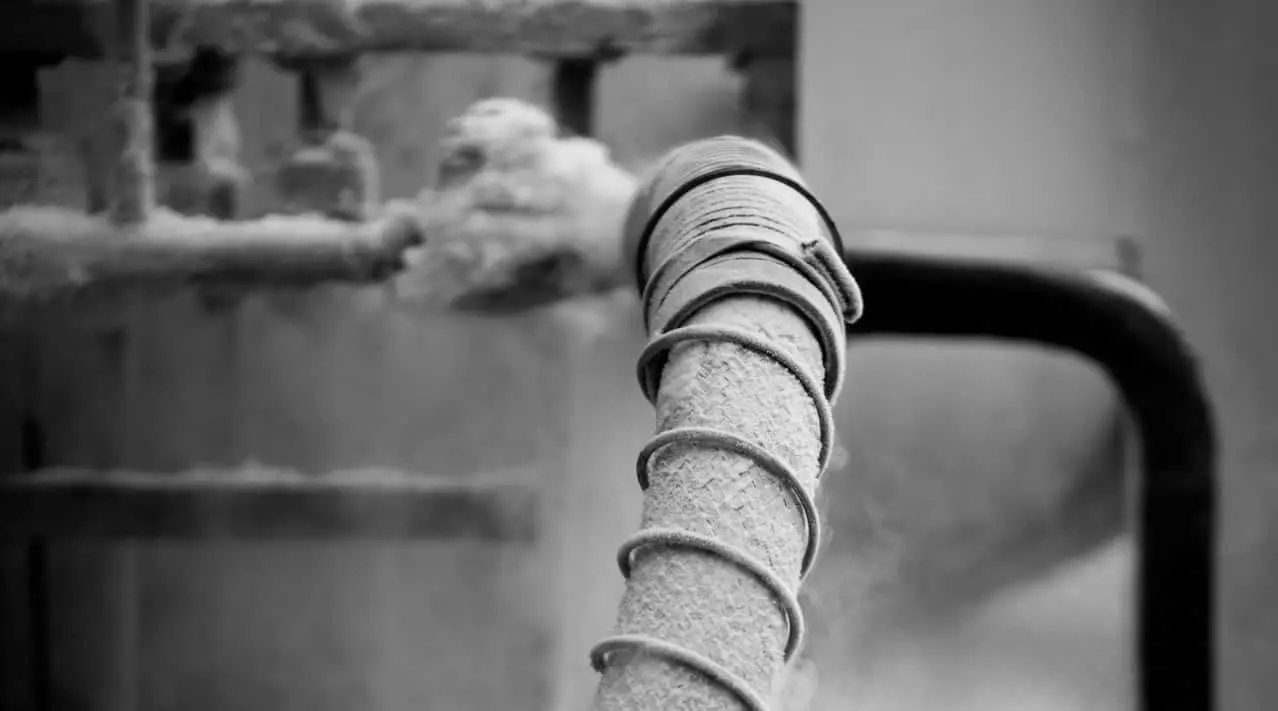
Flexible Hose Terminology
Hose, Braid and Fitting
Hose : Hose is a flexible tube conveying media. At Ocelflex, we offer three hoses – Metal Hose, PTFE Hose and Composite Hose.
Metal Hose : Any flexible tube composed of Steel as raw material.
PTFE Hose : Any flexible tube composed of PTFE or PFA as raw material.
Composite Hose : A flexible tube composed of multiple layers of fabric / PTFE with reinforcement such as a metal wire.
Braid : Woven strands of metal wire placed over a hose to increase the pressure rating of the hose assembly.
Multiple Braid : Two or three layers of woven strands of metal wire placed over each other, often referred to as double braid or two braids and triple braid or three braids
End Fitting : A loose term applied to the end assembly or end connection such as nipple, flange, union, etc., attached to the end of a metal hose. End Fittings can be crimped, welded, brazed or attached to a hose depending upon the type of application.
Construction design
Convolution : The annular or helical flexing member in corrugated or strip wound hose.
Annular : Structure of convolution design on a hose that are a series of complete circles or rings, parallel to each other and located at right angles to the longitudinal axis of the hose.
Helical : Structure of Convolution having one continuous convolution in spiral form resembling a screw thread.
Dimensions
Inner Diameter : The inside diameter of hose corrugation or hose.
Nominal Diameter : The approximate diameter of the hose corresponding to the NPS.
Overall Length / End to End Length : The length of the hose assembly taking into account the end fittings
Live Length : The length of the hose without considering the ferrules and end fittings. It is the length of the hose which is flexible.
Pressure & Temperature
Design Pressure : The maximum pressure at which a hose or hose assembly is designed to be used. This should be greater than or equal to the working pressure.
Working Pressure : The pressure, usually internal but sometimes external, imposed on a hose during operating conditions.
Test Pressure : The maximum internal pressure which a hose can be subjected to without permanently deforming the corrugations. Test Pressure is greater than the design pressure.
Burst Pressure : A burst value which may be theoretical, or a percentage of the actual burst pressure developed by a laboratory test. Burst Pressure is greater than the Test Pressure.
Deformation Pressure : The pressure at which the convolutions of a hose become permanently deformed. Deformation Pressure is greater than the Burst Pressure.
Pressure Drop : The amount of pressure lost by the medium as it travels through the hose.
Pulsating Pressure : A rapid change in pressure above and below the normal base pressure, usually associated with reciprocating type pumps.
Vacuum : Negative pressure or suction.
Ambient Temperature : The ambient temperature is the temperature of the environment to which the hose assembly is exposed.
Working Temperature : The temperature, usually internal but sometimes external, imposed on a hose during operating conditions.
Movement and Motion
Axial Movement : Axial Movement occurs when the elongation or compression of the pipe system is along its longitudinal axis.
Lateral Movement : Motion that occurs when one end of the hose assembly is deflected in a plane perpendicular to the longitudinal axis with the end remaining parallel.
Angular Movement : Motion that occurs when one end of a hose assembly is deflected in a simple bend with the ends not remaining parallel.
Radial Motion : Motion that occurs when the centreline of the assembly is bent in a circular arc.
Displacement : The amount of motion applied to a hose for parallel offset or angular misalignment.
Cycle-motion : The movement from normal to extreme position and return.
Bend Radius, Dynamic : he smallest radius at which a hose can be used without kinking while constant or continuous flexing occurs.
Bend Radius, Intermittent : The smallest radius at which a hose can be used without kinking when motion occurs at irregular or occasional intervals.
Bend Radius, Static : The radius of a bend measured to the assembly’s centreline to which an assembly may be bent for installation. The assembly should be subjected to no further motion other than vibration.
Vibration : Low amplitude motion at high frequency
Torque ( Torsion ) : excessive twisting of the assembly causing metal fatigue and failure.
Media, Medium : A gas or liquid or solid medium to be conveyed within the hose.
Pressure Drop: The amount of pressure lost by the medium as it travels through the hose;
Flow Rate : The volume of media being conveyed in a given time period (measured in ft3/hour; lbs/second; or GPM).
Hose to End Fitting Attachment
Lap Weld : Type of weld in which the ends or edges of the metal overlap each other.
Butt Weld : The joint formed by placing two pieces of metal end-to-end and then welding along the join.
GTAW / TIG : Gas tungsten arc welding (GTAW), also known as tungsten inert gas (TIG) welding, is an arc welding process that uses a non-consumable tungsten electrode to produce the weld
GMAW : Gas Metal Arc Weld. In the GMAW process, an electric arc is formed between the metal and a wire electrode, applying heat to the metal pieces.
Brazing : Brazing is ideally suited for joining of dissimilar metals and is performed at relatively low temperature.
Crimping : A method of joining two or more pieces of metal or other ductile material by deforming one or both of them to hold the other.
Additional Accessories
Inside lining : Inner lining over the length of the hose, usually made of Steel or PTFE.
Armor or Casing : To protect the external braid and hose from corrosive external environment or kinking, crushing, weld spatter and abrasion. Usually a flexible interlock tubing.
Helical Wire Armor or Spring Guard : To provide additional protection against abrasion. Hoses can be supplied with an external round or oval section wire spiral.
Other terms
Application : The service conditions that determine how a metal hose assembly will be used.
Anchor : A restraint applied to a pipeline to control its motion caused by thermal growth.
Ply, Plies: The number of individual thicknesses of metal used in the construction of the wall of a corrugated hose.
Scale : Generally refers to the oxide in a hose assembly brought about by surface conditions or welding.
Corrosion : The chemical or electro-chemical attack of a media upon a hose assembly.








